
You know you can stop digging your garden anytime, right? It’s not a must to create a lush, backyard garden full of nutritious edible vegetables, herbs, flowers and fruits.
Gone are the hard backbreaking days of turning the soil with a spade. There’s no need for a rototiller either. Heck, your weeding chores will become lighter with each passing year as you let those soil digging-tilling-turning tools rest in the back of the tool shed where they belong.
See, there’s a better way to garden that is in alignment with nature, rather than being a method of growing food that constantly fights it. A way that allows the ground to stay covered and moist, as soil is built, not destroyed.
Sounds too good to be true?
Well, you might want to try it for a couple of seasons for yourself, or glean some wisdom from another homesteader/gardener who’s already converted her or his growing space to a no-dig zone.
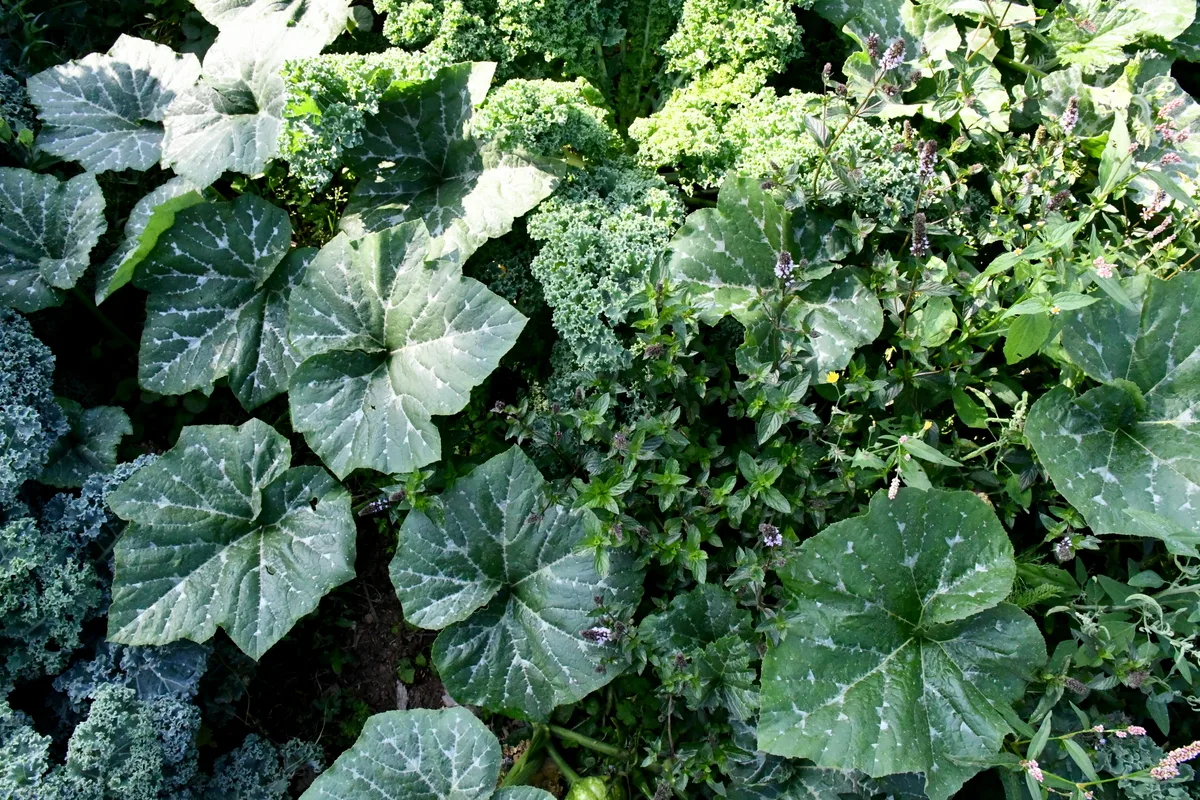
The benefits of not digging your garden are many. For starters, it helps to eliminate soil compaction. Not destroying the complex soil structure will save you a lot of time and heartache in the long run.
Secondly, it encourages earthworms to occupy the land and do much of the underground digging work for you. Working with nature, rather than against it, is a beautiful thing indeed.
As time passes, you’ll also notice that fewer and fewer weeds pop up in your garden. And some of the ones that do, such as chickweed, yellow wood sorrel, purple dead nettle, purslane, plantain and goosefoot are all edible.
A no-dig garden is a return to rewilding.
It encourages beneficial pollinators on those aforementioned weeds. It entices birds into the garden with the plethora of insects it attracts.
Following the principles of a no-dig garden can help you attract more fireflies to your backyard as it encourages you to ditch all chemicals. Not only is this healthier for nature, it is inevitably healthier for you and your family too. So, what are you waiting for?
The time to stop digging is now.
Seriously, you can convert your dug garden into a no-dig garden at any time of the year. All it takes is a lot of mulch and a little bit of patience.
I’ve lost track how many years my husband and I haven’t dug the garden by now, it’s definitely more than a decade. In this article, I’d like to share the tried and tested vegetables that have worked the best in our no-dig garden.
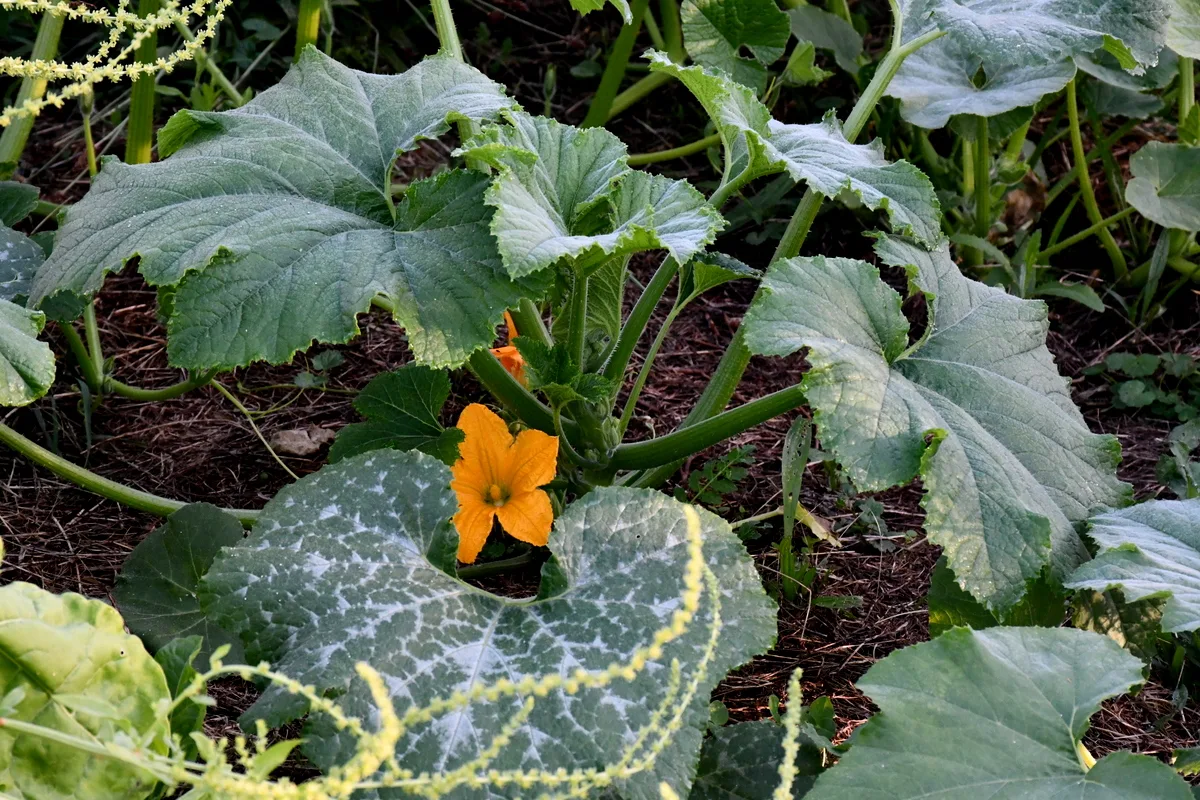
That’s not to say that others won’t work. After all, you know the quality of a garden is based on seeds, soil, climate and location. So if your favorite veggies aren’t on this list, go ahead and try them anyway. You never know what will work in your garden if you never try.
Best Plants For Your No-Dig Garden
The following plants are listed in no particular order. Not alphabetical, nor in terms of ease of growing. Give each one some thought, as you imagine how you could incorporate it into your own no-dig garden.
If you have the time, you might want to take a look at these 12 common mistakes that beginner no-dig gardeners often make.
Or jump straight to the list and find out what vegetables are the best for your no-dig garden.
1. Summer Squashes
Not all summer squashes are zucchinis, but all zucchinis are summer squashes. Likely you’ve heard this before. All it means to say is that in your no-dig garden feel free to plant as many zucchini, patty pans, crooknecks, straightnecks, and cousas as you can possibly fit in.
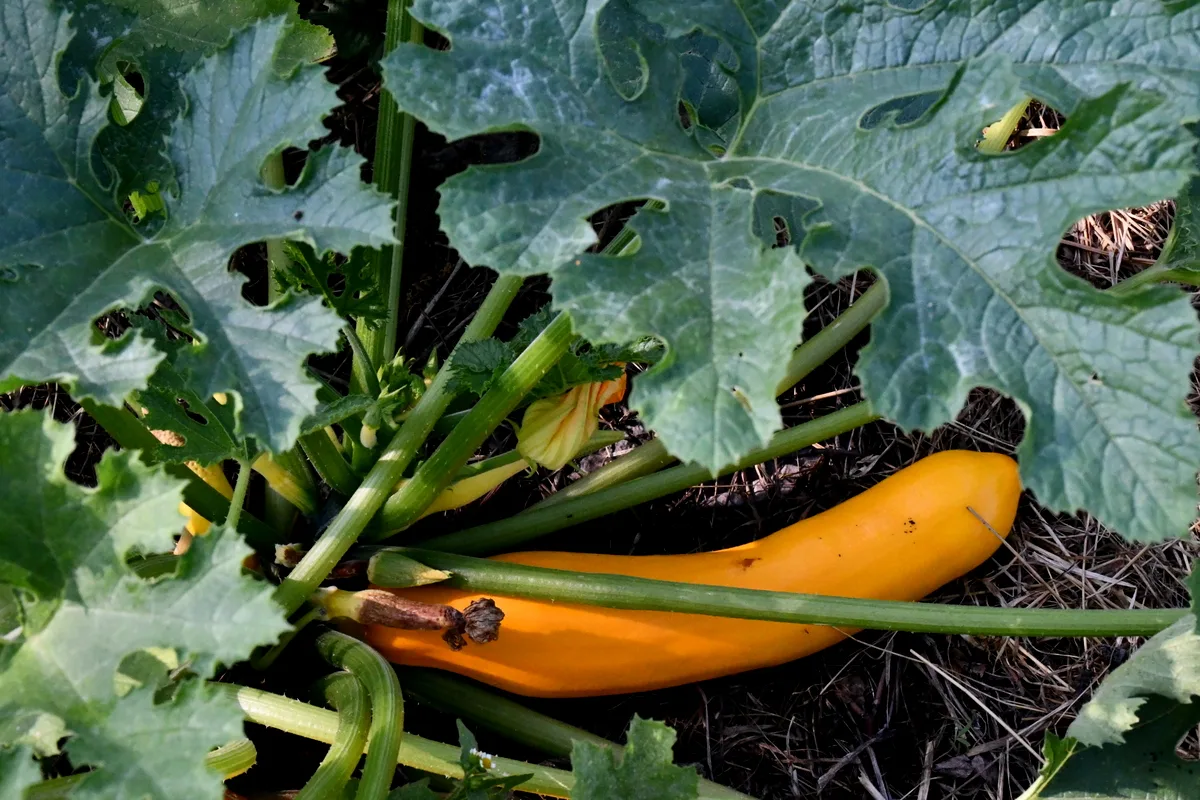
Planting of squashes in a no-dig garden is super easy. Once you have your thick layer of mulch down, all you have to do, is pull back the mulch where you want to see your seeds emerge. If the soil is extremely hard, go ahead and scratch the surface a bit to loosen the ground.
Then sow your seeds and cover them back up with a thin layer of mulch, or add a generous handful of well-rotted compost if you have it. As the summer squashes grow, you can apply even more mulch to keep the ground moist and the weeds at bay.
2. Winter Squashes
Winter squashes are to be treated the very same way as summer squashes in your no-dig garden. Both in terms of planting and applying extra mulch as the growing season progresses.
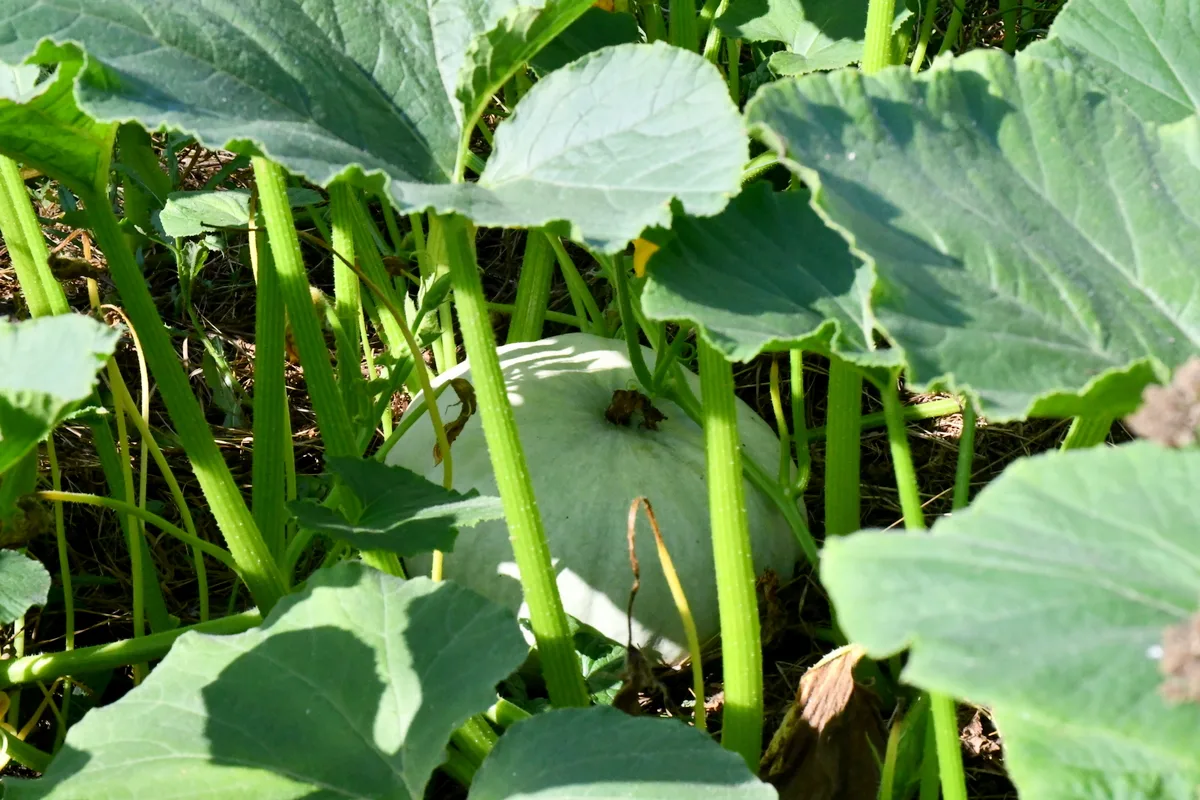
Types of winter squash suitable for no-dig gardening are:
- Sugar Pumpkin
- Kabocha Squash
- Acorn Squash
- Butternut Squash
- Carnival Squash
- Hubbard Squash
- Delicata Squash
- Banana Squash
- Spaghetti Squash
- Turban Squash
All squashes and pumpkins will benefit from mulch. Even if you haven’t converted your entire growing area to a no-dig garden just yet, it’s good to test the waters with such a large plant. Once squashes reach about 10′ in length, their growth being fairly predictable, it makes the placement of mulch a no-brainer right underneath the vine.
Related reading: 9 Varieties of Winter Squash You Should Be Cooking this Fall
3. Swiss Chard
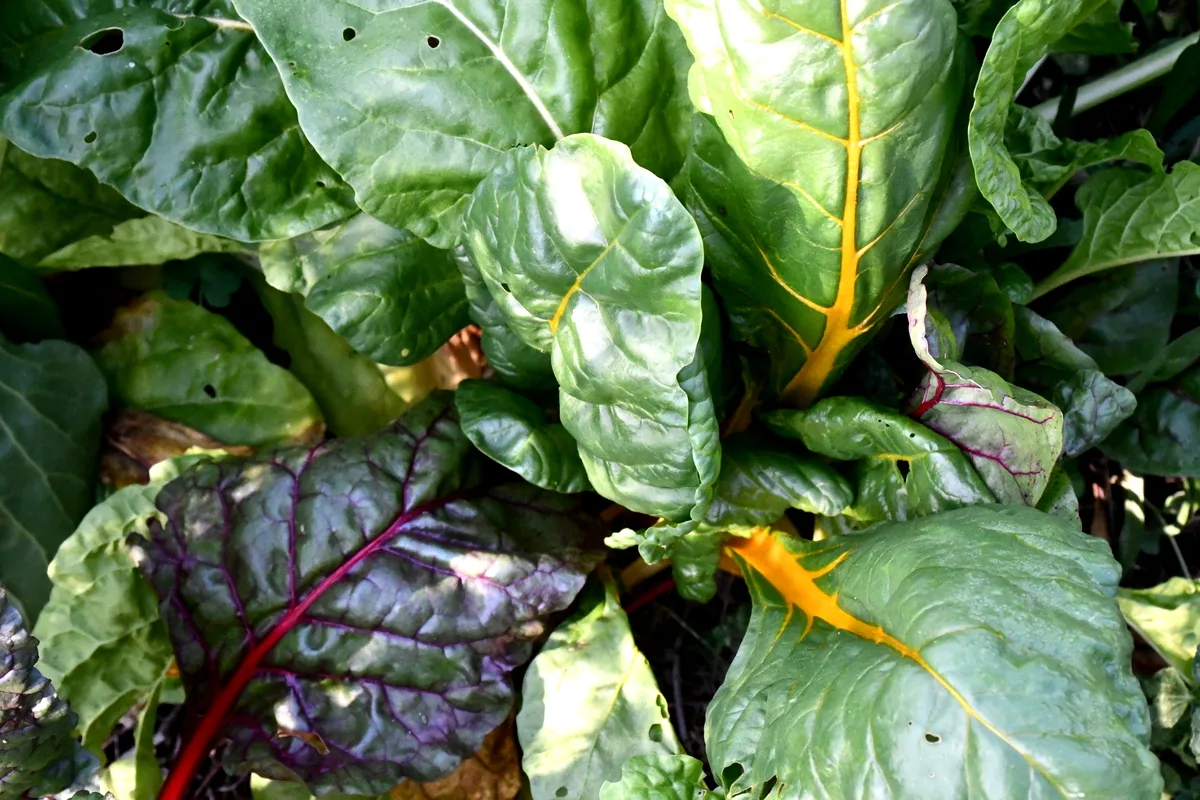
Growing greens in a no-dig garden is actually really simple. But one of the biggest mistakes that gardeners make, is planting them at the wrong time. Figuring out the timing for your climate and soil conditions may take some trial and error, but once that’s taken care of, all that’s left to do, is sow your chard seeds directly in the garden.
Swiss chard doesn’t have deep roots, so it can be planted anywhere, even in pots. That being said, it will really love the cover of mulch to keep more moisture in the soil.
If you are into companion planting, just be sure not to plant it near potatoes, cucumbers, corn or melons. Anything else goes.
4. Kale
For the longest time we couldn’t find kale seeds where we live. Then, one day at the market, we found a man selling kale transplants. We bit on the chance to plant fifteen of them in our no-dig garden. Three months later they are soaring in all directions, despite the drought and they have become the highlight of our garden.
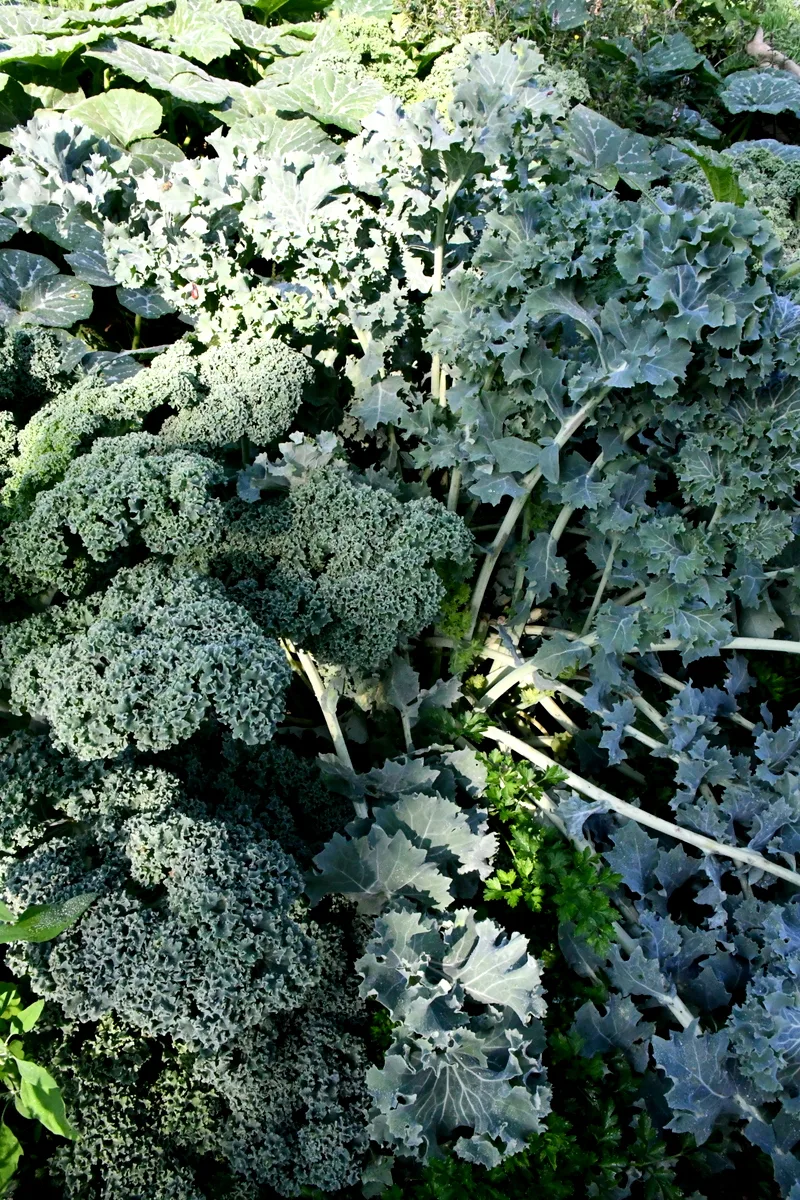
We’ve only been growing kale for one season, but based on this initial success, will definitely be planting it again. See, kale is cold-hardy, drought tolerant and can even survive shady areas in the garden.
It’s a must to have in the garden.
Especially that you can eat it continuously throughout the season as a cut and come again vegetable.
The best no-dig gardening tip you’ll ever hear:
Anytime you can plant transplants instead of sowing seeds – do it! It will save you a ton of planting time, the plants will grow faster, and you can easily get the spacing right. At the same time, you get to leave the bulk of mulch intact without pulling any of it back.
When you plant transplants in your no-dig garden, all you have to do is use a small trowel and part the soil as much as it takes to slip the transplant in. Use your hands to put pressure on the ground as you push the soil back in place. Then water as often as necessary to give the plants their best start.
5. Cabbage
Cabbage is another vegetable that is easy to put in your no-dig garden in transplant form.
You can also start it from seed, directly in the soil.
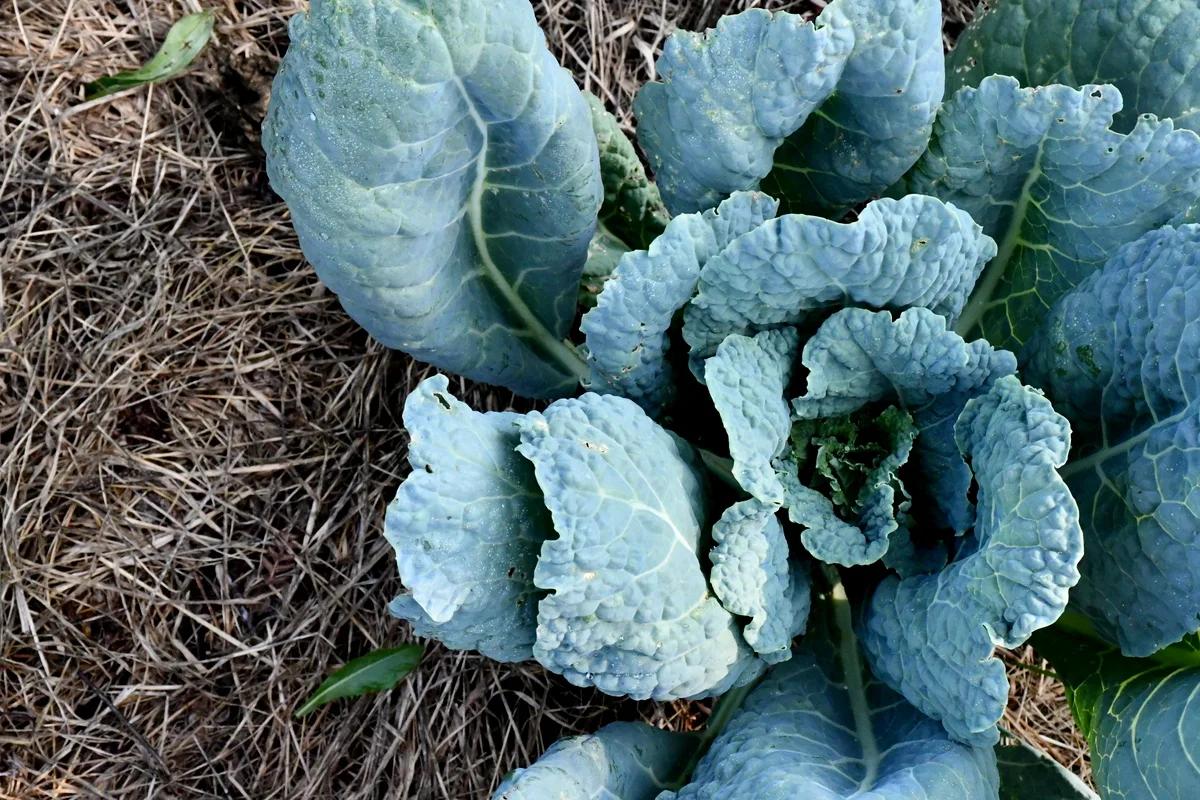
Any variety of cabbage will grow well in your no-dig garden, provided that soil nutrient requirements are taken care of. Cabbages grow best in well-draining soil with a pH of 6-7. They also need a minimum of 6 hours of sunlight a day.
With a no-dig garden, soil fertility will grow year after year, making it ever easier to grow a nice head of cabbage. And if it isn’t sauerkraut that you are after, you can also try growing perennial cabbage. It’s a non-fussy leafy green that comes back year after year.
The second best no-dig gardening tip:
Plant as many perennials in your no-dig garden as possible to minimize your time growing food as you enhance the quality of the soil.
There are perennial onions, chives, asparagus, horseradish, lovage, rhubarb and so much more to choose from.
6. Parsley
Again, parsley transplants can’t be beat. Slip them into the ground, cover up the base with mulch, give them a good watering and they are good to go for several weeks before a light weeding may be in order.
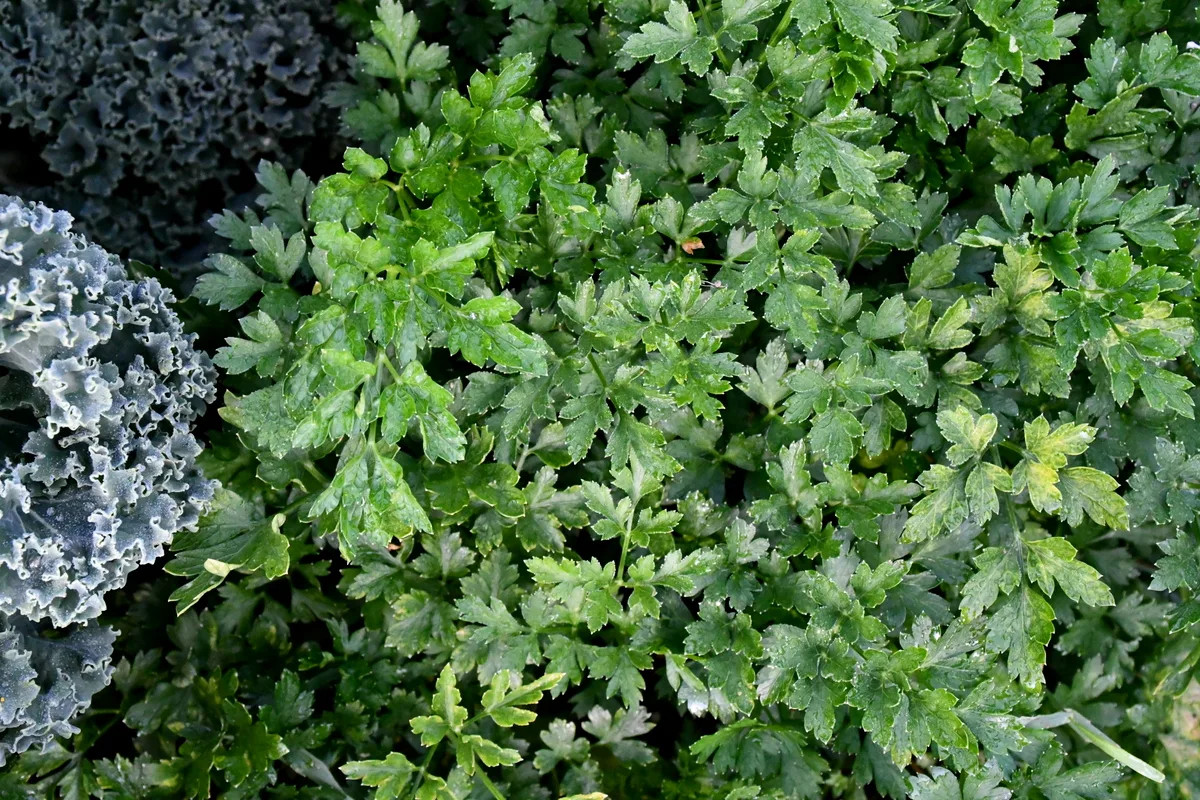
There’s no need to go into details here, as we already have a tutorial on how to grow massive bunches of parsley from seed or starter plant here on Rural Sprout.
Anything that you can grow in a conventional garden can also be cultivated in a no-dig way. The biggest difference is always the application of mulch, which can happen at anytime throughout the season as necessary.
7. Beets
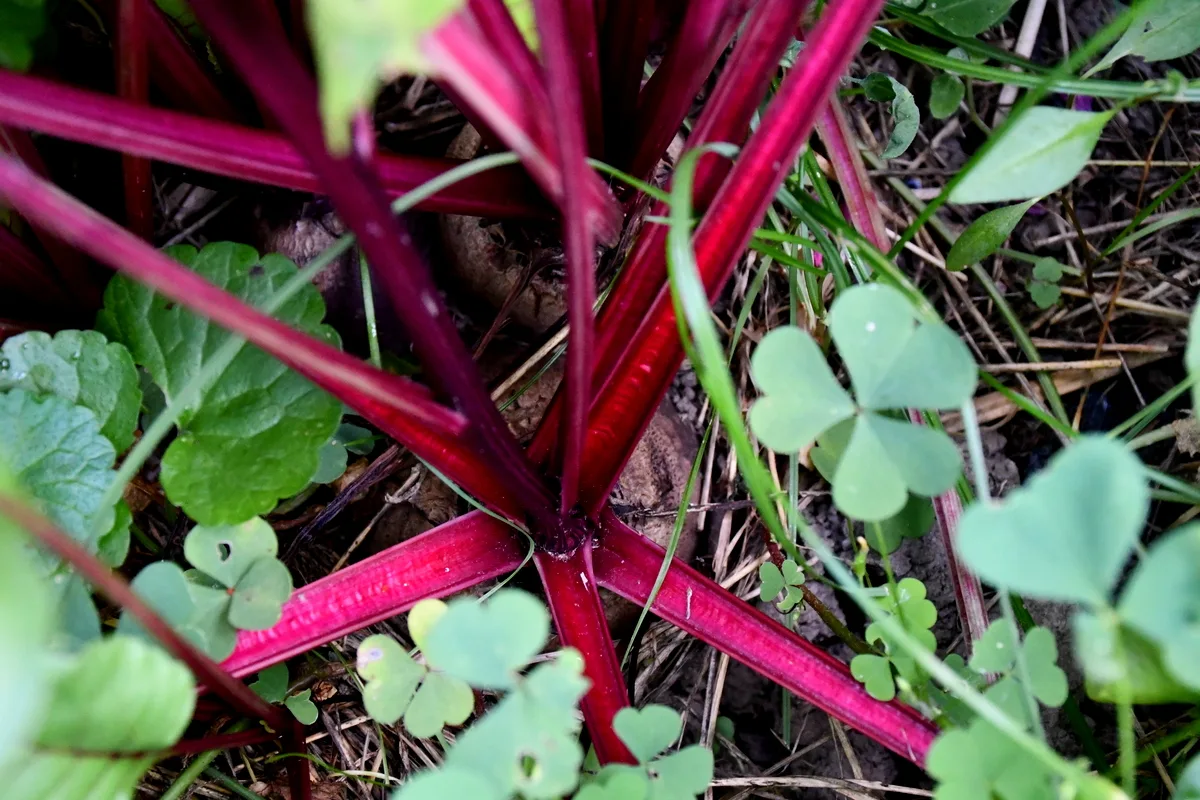
Fall planting of beets in your no-dig garden? Yes, it’s possible. The planting process is exactly the same as you would follow in spring.
Beets are perhaps best known for their red tubers, though we find the greens enticing as well and routinely pluck a couple from each plant to add to a pot of rice or stir-fry throughout the summer.
More than that, beets are wonderful to grow in a no-dig garden, for the simple fact that you can leave them in the ground (even all winter) till you are ready to eat them. To do this, cover them with an even deeper layer of much before the freezing temperatures hit. It’s such a great feeling to harvest from your garden, even when it’s covered with a blanket of snow.
8. Kohlrabi
You may have noticed by now that Brassicas are growing well in a no-dig garden. Kohlrabi, though an uncommon vegetable, is beginning to make a stronger appearance in backyard gardens. Here’s why: it’s nutritious and rich in Vitamin C and B6, it supports your immune system, plus kohlrabi is very easy to grow.
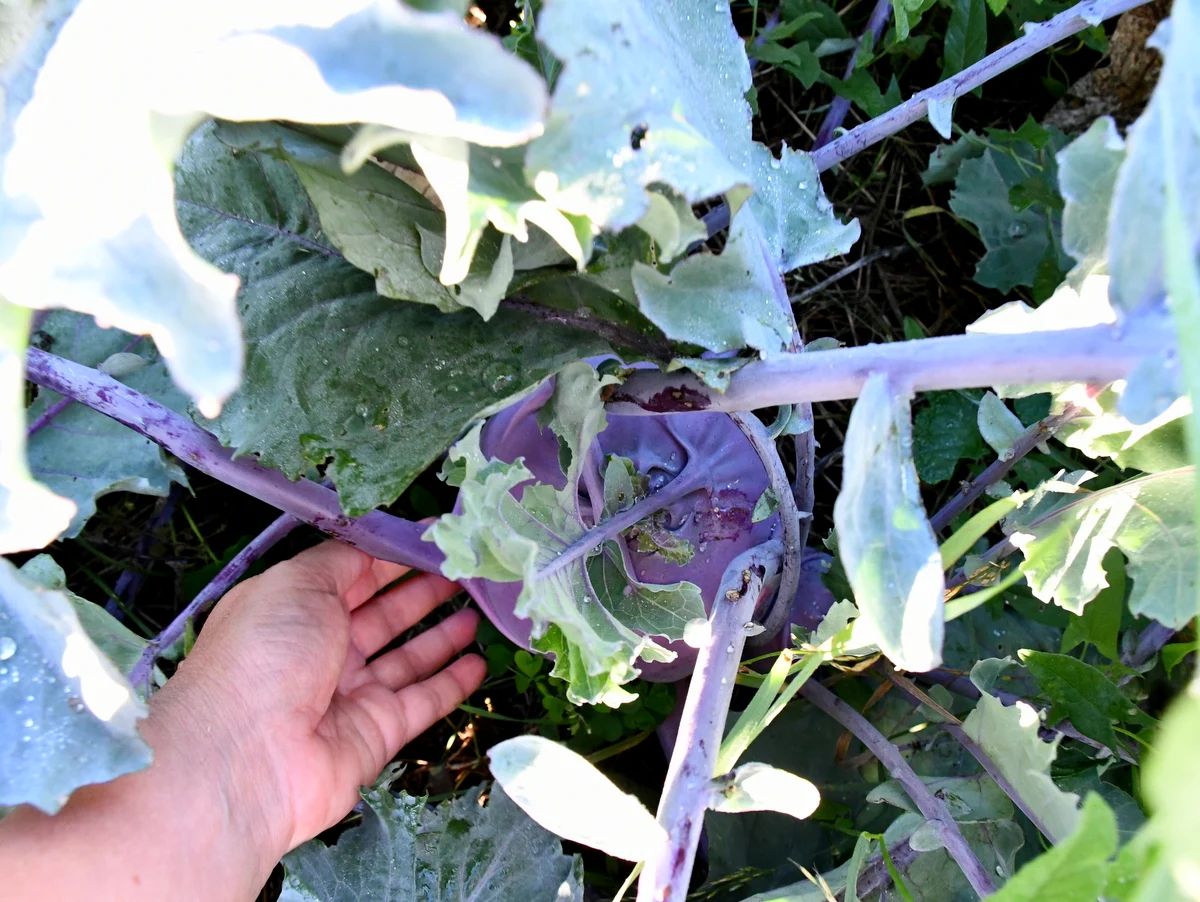
It makes an excellent addition to your no-dig garden, survival garden or any type of garden because not only is the tuber edible, the young, tender leaves are too.
If you haven’t given thought to planting it yet, now is your chance.
9. Radishes
Planting radishes in a no-dig garden is slightly different than just pulling a line in the soil and covering them up. The only additional step here is to first make a part in the mulch which is long enough for an entire row. If your garden is new and the soil is still compacted, loosen it ever so slightly without digging.
Scratch the surface with a stick or trowel, lay out the seeds and cover them back up with soil or compost. Then lightly bring the mulch back over the row. Radish seeds will emerge in no time at all. If you choose not to eat all of the radishes, or some don’t grow as large as you expect, be sure to leave them to flower and form pods.
Allowing them to do this, is a fantastic way to maximize the amount you can eat from your garden. Here’s why you should let your radish pods go to seed.
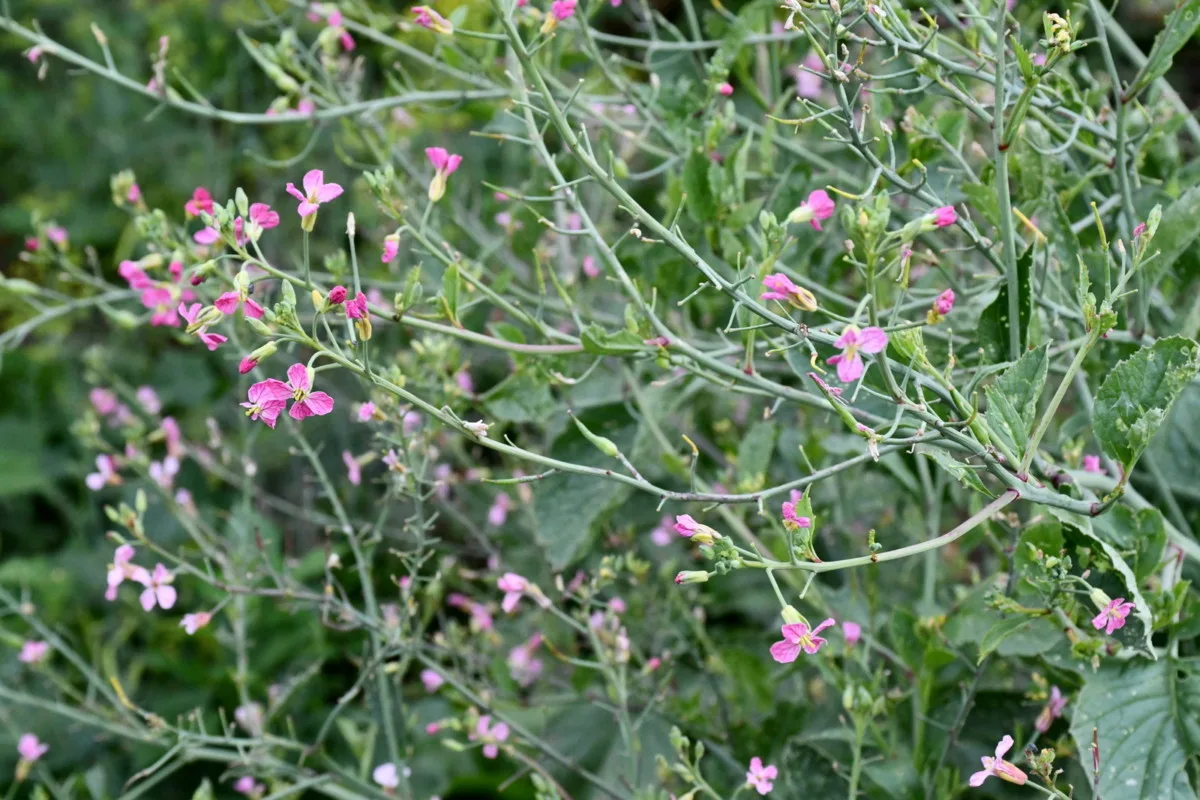
Not only can you make pickled radish pods, canned or refrigerator-style, the flowers will also attract all sorts of beneficial insects at a time when your squashes are flowering.
10. Lovage
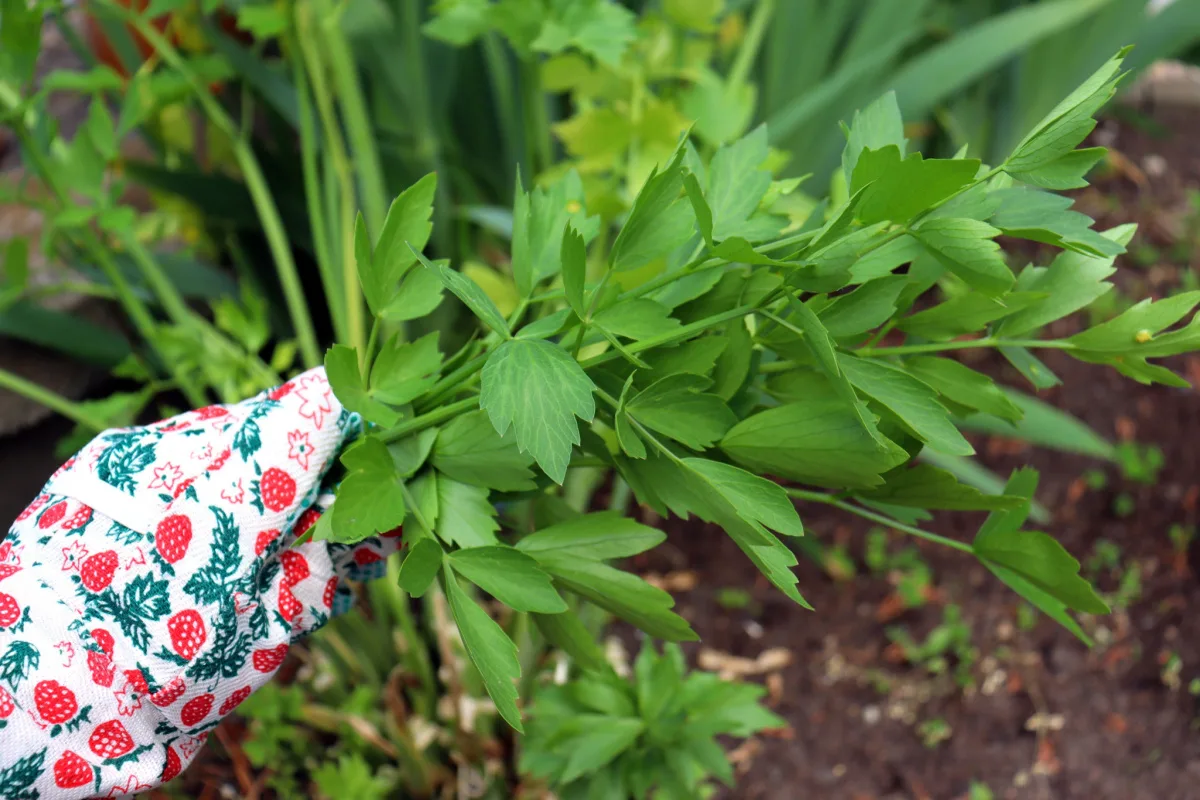
Lovage may be a long-forgotten herb, but in our garden, it makes its presence known every year. Being a perennial, it’s one of the very first things to emerge each spring, competing with the perennial onions and chives.
It has an intense flavor and smell though, so only grow it if you love it, or love someone who does. Otherwise, know that it has a tendency to take up a lot of space in the garden, with one plant growing to a height of more than 6′.
It’s reliable, it’s super flavorful and you don’t need to do anything with it other than harvest and cut it back in late summer.
One thing we found out this year, is that the dry, hollow stems of lovage can be cut to size and used as straws. How about that to liven up your Bloody Mary?
I should also mention that the fragrant flowers attract all sorts of beneficial insects. For the sake of biodiversity we should all be planting as may flowers as we can.
11. Rocket-Ruccola-Arugula
If you are looking for easy-to-grow green leaves with a whole lot more flavor than lettuce, search no further than arugula, which is otherwise known as rocket or ruccola.
It’s slightly peppery, wonderfully spicy and full of antioxidants. Plus it contains 5x more vitamin B5 than spinach. Though spinach isn’t featured on this list, it is a runner-up on the list of best plants for your no-dig garden. However, planting lettuce in a no-dig garden is known to attract slugs. Plant it at your own risk.
A small patch of arugula will keep your taste buds happy for quite some time. As long as you keep picking it, it keeps growing. The only thing you need to watch out for, is that it will bolt in full sun and high heat.
12. Beans, Bush and Pole
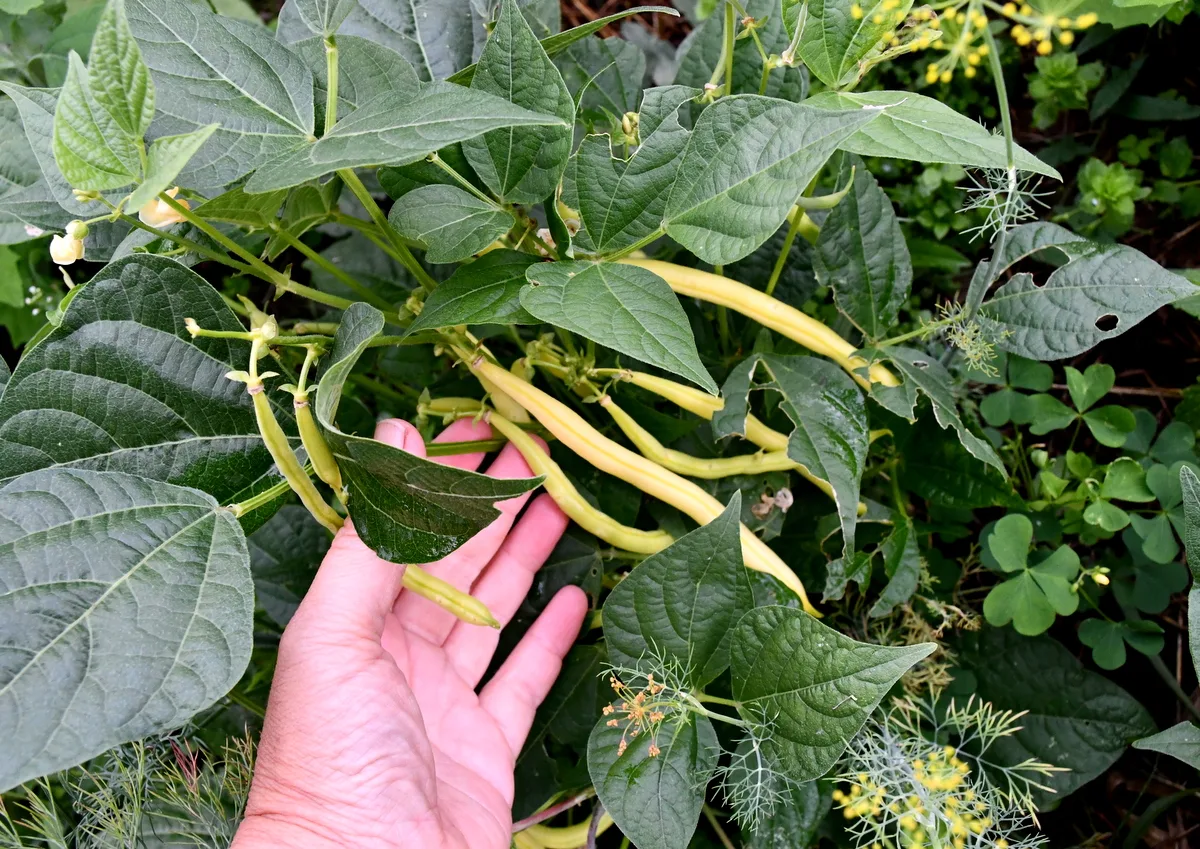
Beans are among the easiest plants you could ever grow. In a no-dig garden the same applies.
You can grow green beans, yellow wax beans, dry beans, bush beans, kidney beans, garbanzo beans, whatever kind of beans you get seeds from.
Beans are fun and rewarding to grow. You get to take a fairly large seed, bury it in the soil and wait for the seeds to germinate (this takes just 7-14 days), then watch it take off. Make sure to put in stakes for your pole beans, otherwise they’ll be sprawling like a patch of pumpkins.
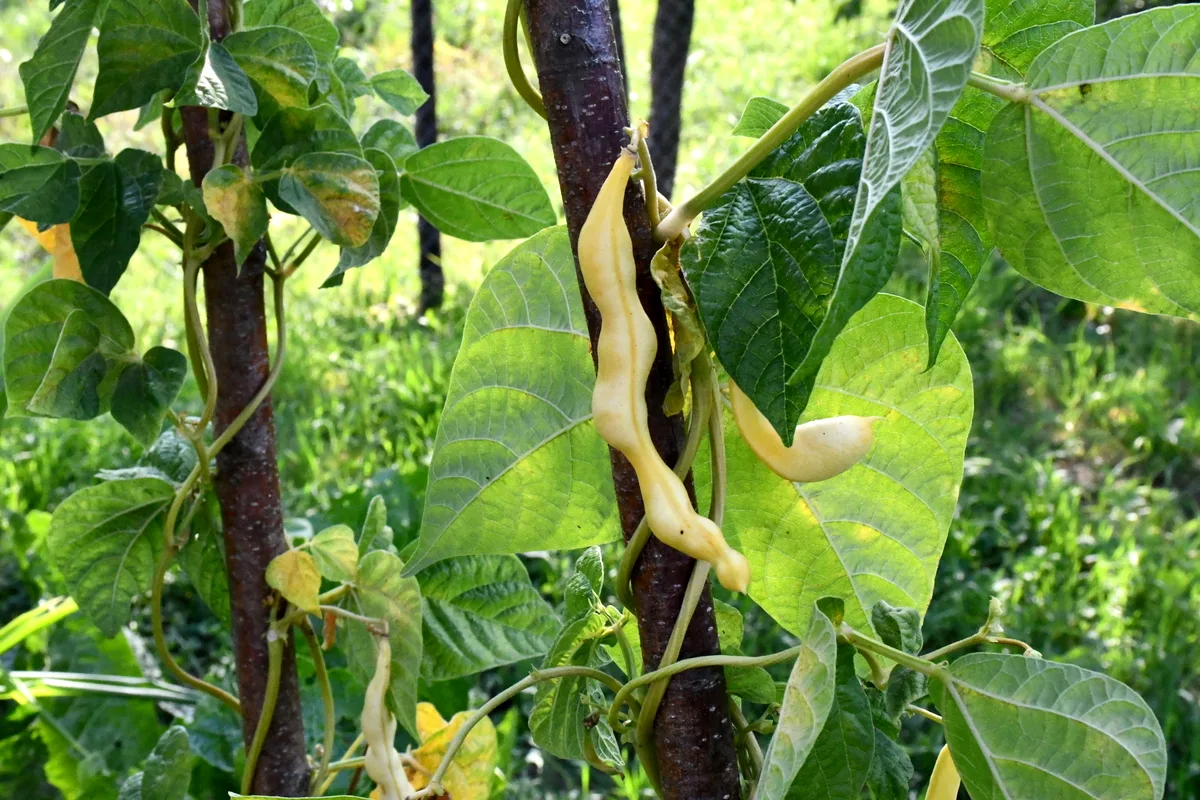
Once you get the hang of planting in your no-dig garden, nothing seems impossible. All you have to do, is pull apart that mulch, just enough to scratch the ground and fit in some seeds, then cover it lightly.
13. Onions
Onions and garlic are also super easy to plant in a no-dig garden, especially when you start from sets. There are two ways to go about this. If you haven’t had the chance to put a new layer of mulch down yet, go ahead and remove any weeds by hand, then plant the sets using a bent wooden tool or planting stick. Then cover with mulch when the rows are finished.
If there is a thick layer of mulch still sitting there from last season, you have two choices. You can either rake it back and plant your sets, or seeds. Or you can simply poke straight through the mulch layer (depending on how dense it is) and plant as is.
You don’t need to overcomplicate things, but you still need to get your plant spacing right.
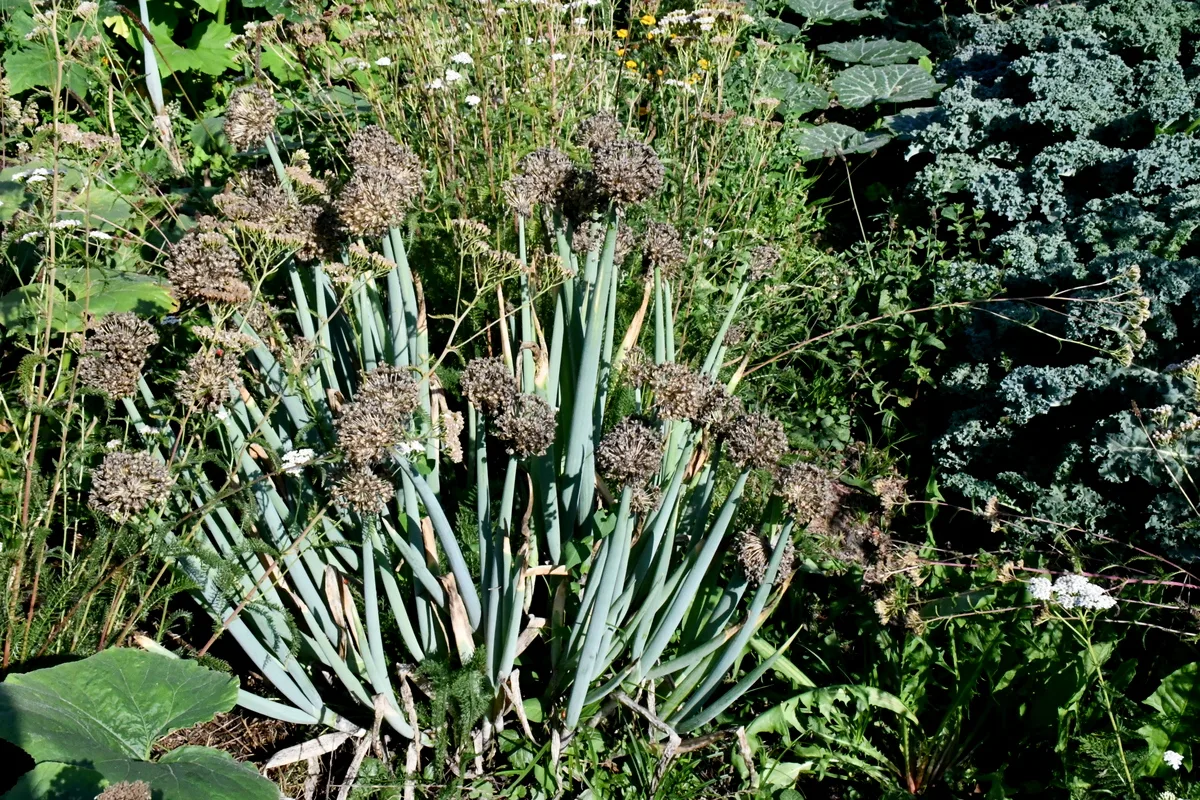
14. Garlic
If the statement, there is no life without garlic, resonates with you, then you must plant garlic in your garden at any cost. You don’t even have to dig up a long row to get it in the soil.
Follow the technique of planting the onion sets from above, and that’s all you need to know to get started.
Related reading: How To Harvest, Cure & Store Garlic So It Lasts 8+ Months
15. Horseradish
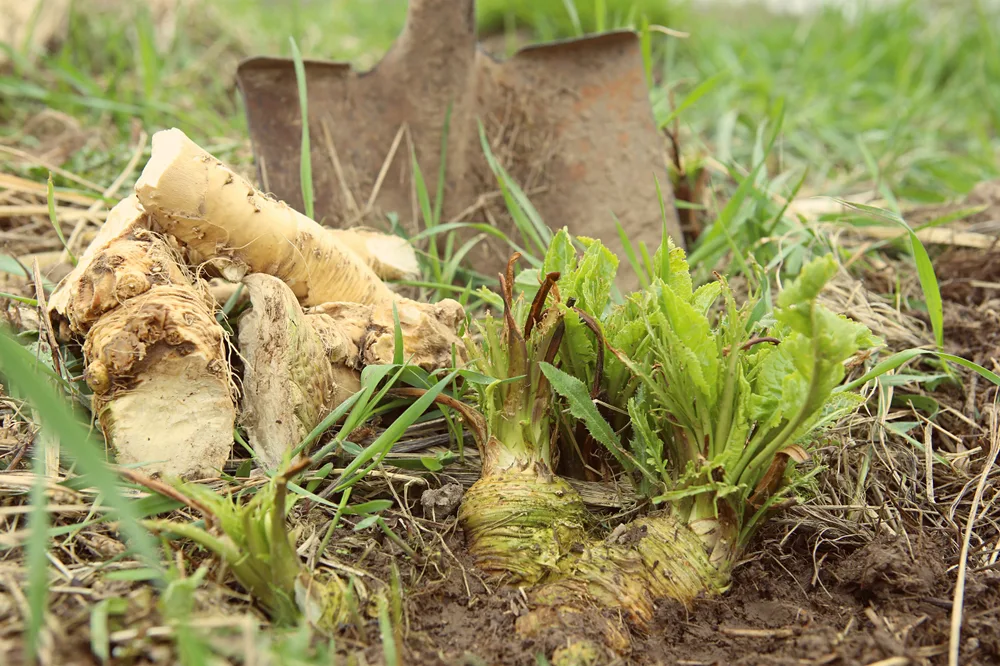
A lot of gardeners avoid horseradish because they don’t appreciate the sinus-clearing properties of the freshly grated root. Or because horseradish has a tendency to take over the garden if not kept in check.
Truth be told, it’s really a wonderful spicy root vegetable in the mustard family which has healing properties. Plus, it’s a long-lasting perennial, so it always gets bonus points in our gardening book.
Don’t be afraid of growing horseradish in your no-dig garden, for it’s not nearly as invasive as some make it out to be. Before it goes to seed, you can always cut back the stalks, just to be sure the seeds do not spread.
Harvesting it, however, does take a spade. You’ll have to dig that out from the back of the shed to bring a large root up to the surface.
16. Tomatoes
I believe it’s commonly known that tomatoes thrive with a layer of mulch at their feet.
The mulch helps to retain moisture in the soil, it prevents the ground from overheating, it virtually eliminates weeds, it reduces erosion and provides a safe, clean place for overweight or overripe tomatoes to fall upon.
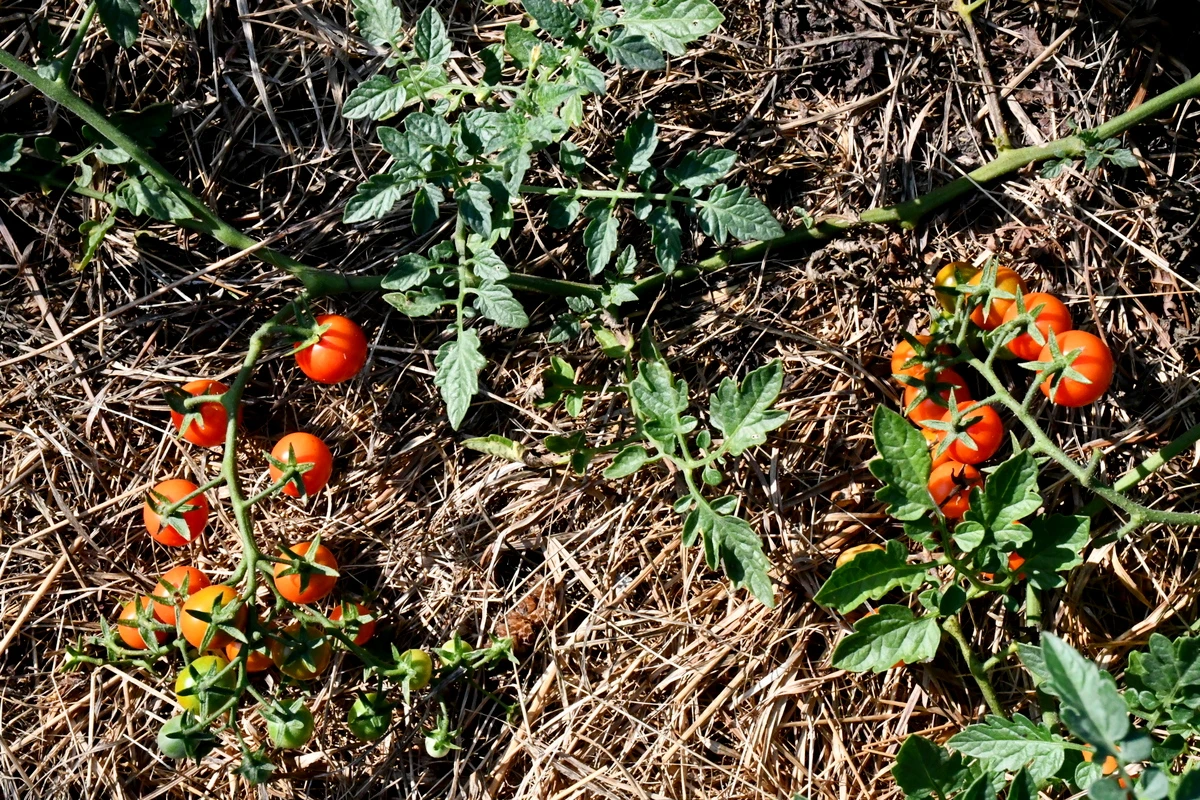
If you are starting tomatoes from seed directly in the garden, you may have to wait a long time for them to emerge, due to cooler temperatures of mulched soil. Transplants are the best way to deal with this, whether you grow them on your own, or purchase the starter plants at a local market.
Again, pull back that layer of mulch, use a small trowel to get your tomato transplants in the ground, make sure the soil is compacted around the roots and bring the mulch back to the base of the plant. It can’t get any easier than that. Unless it has rained, or you’ve watered your garden first.
Don’t forget to water any transplants right away after tucking them newly into their mulched beds.
17. Carrots and Other Root Vegetables
We’ve talked a lot about how well transplants do, but what about those veggies whose seeds need to be directly sown in the ground?
Well, those can also work well in your no-dig garden, though in the beginning stages, you may get some mixed results.
Here’s one woman’s take on how she sows parsnips, carrots and other root veg the no-dig way.
Digging them out of the ground, for obvious reasons, will take that spade again.
18. Flowers – Nasturtiums, Calendula
No garden would be complete without flowers of various kinds. Nasturtiums are totally edible from stem to leaf and flower, with medicinal properties too.
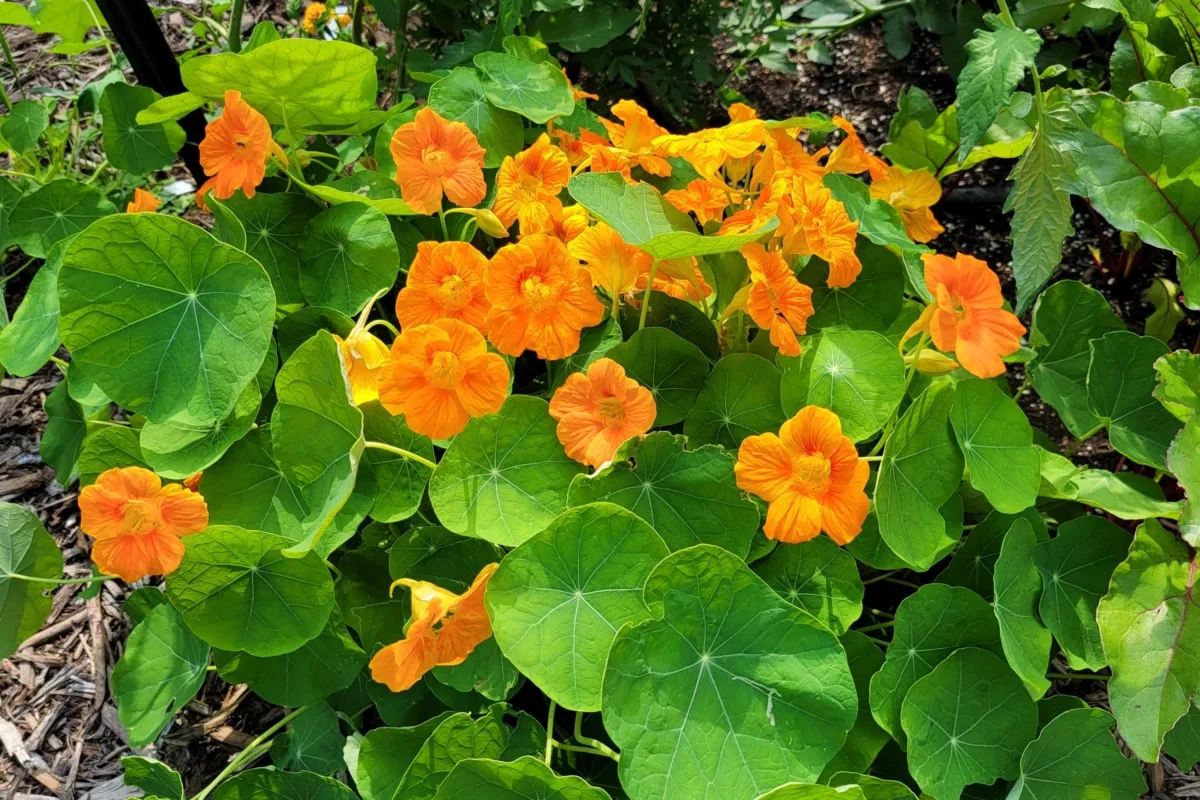
Dried calendula blossoms can be taken in tea form to prevent infection and heal injuries, thanks to its antifungal and antimicrobial properties.
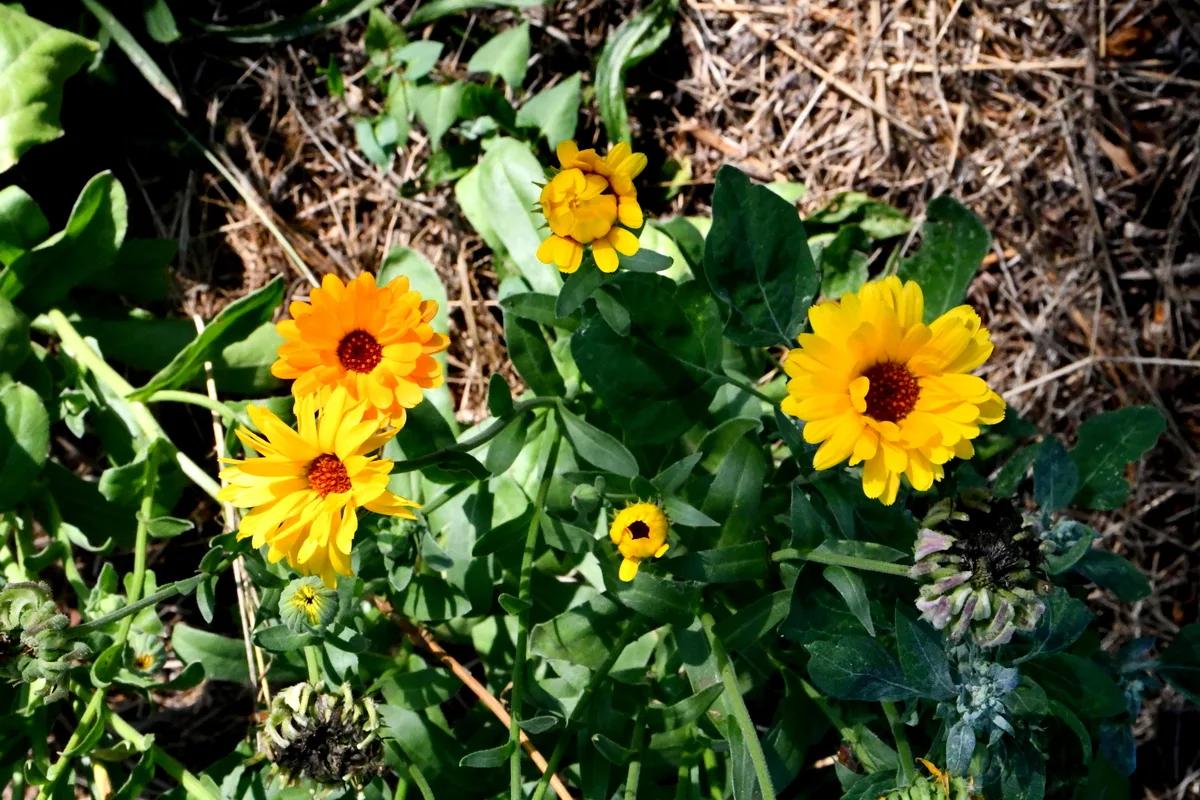
Cornflowers can be dried, or crystallized for use in decorating cakes. Pea flowers can be consumed raw in salads. Onion and chive flowers are delicious no matter how you eat them.
And don’t forget about squash flowers. These delicate blossoms can be stuffed and cooked with rice, cheese, meat and other herbs from your garden.
Anywhere you can tuck more flowers into your garden, the better it will look and the more pollinators you will attract.
19. Herbs
Herbs in a no-dig garden are an absolute must.
Most of the time you will be transplanting them from pots, rather than starting them from seed. Not only is this a convenient way to fill in gaps in the garden, you get to benefit from their flavorful nutrients too.
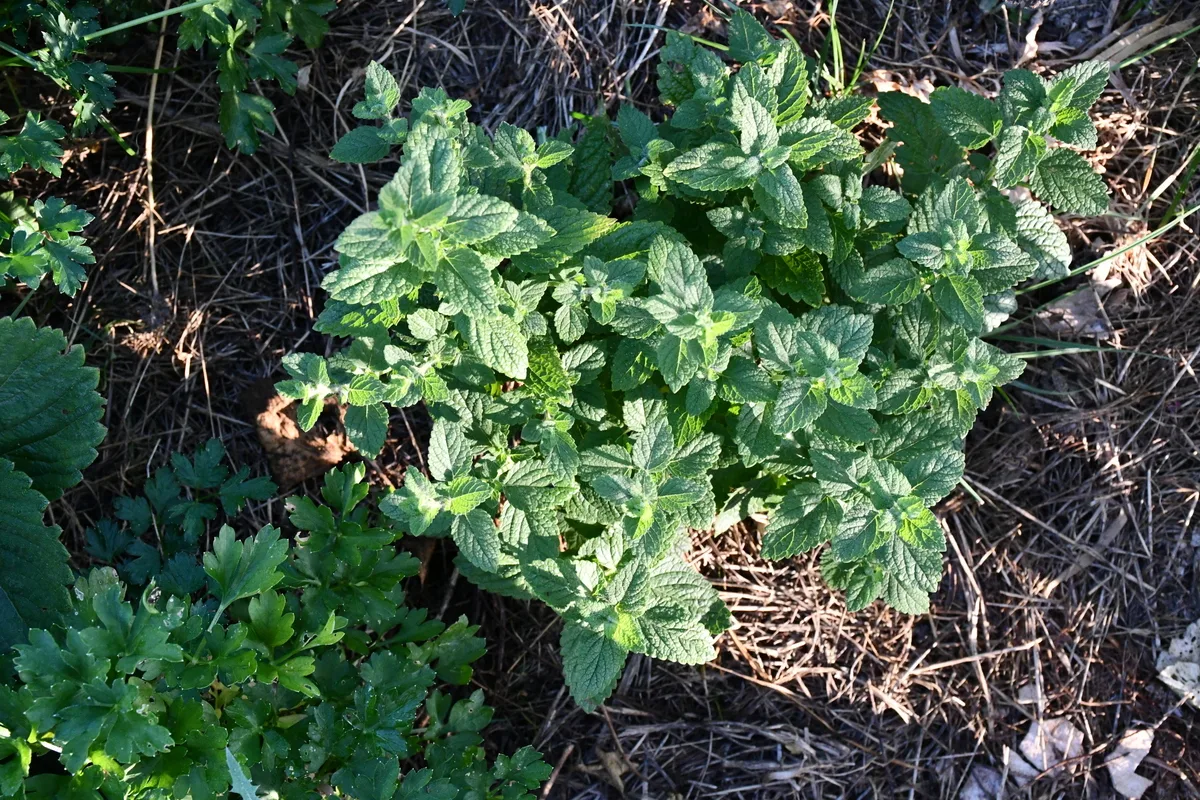
Best herbs to grow in your no-dig garden:
- lemon balm
- oregano
- thyme
- rosemary
- basil
- chives
- mint
- dill
- tarragon
- parsley
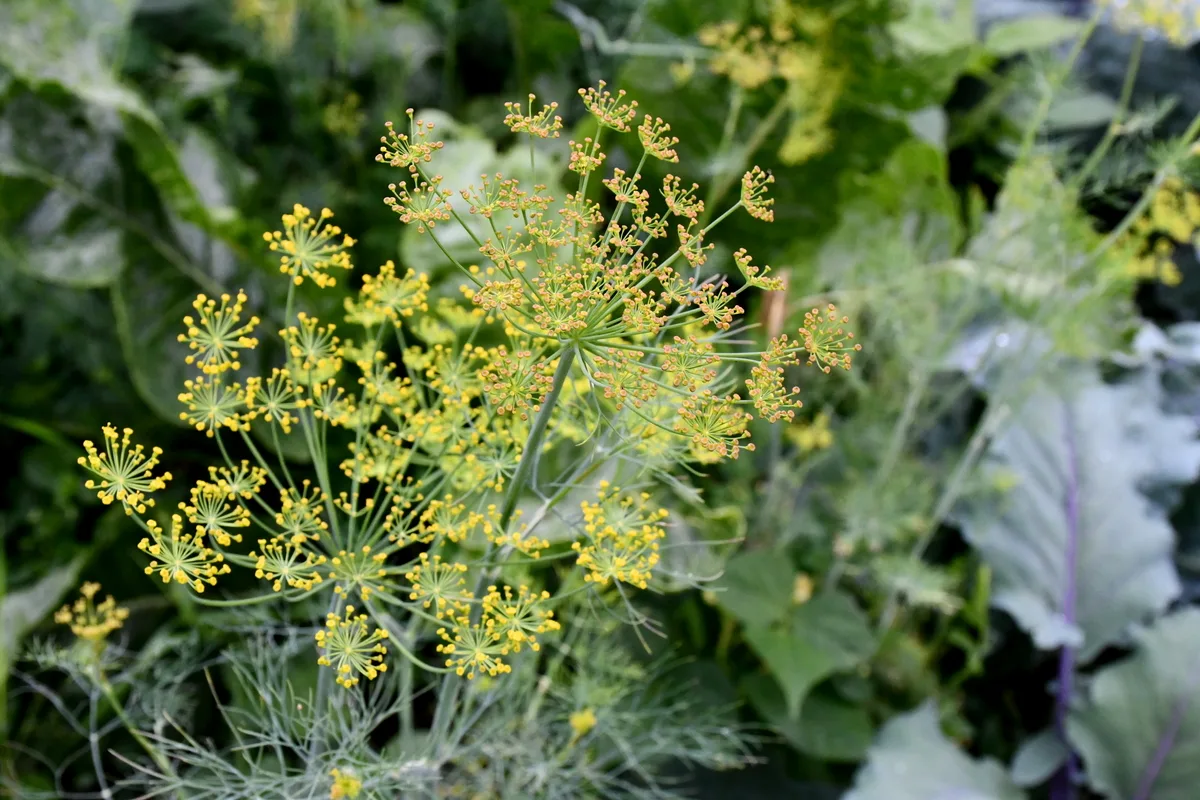
You might also want to try growing these lesser-known herbs too. In a no-dig garden, just about anything grows. Even potatoes!
20. Potatoes
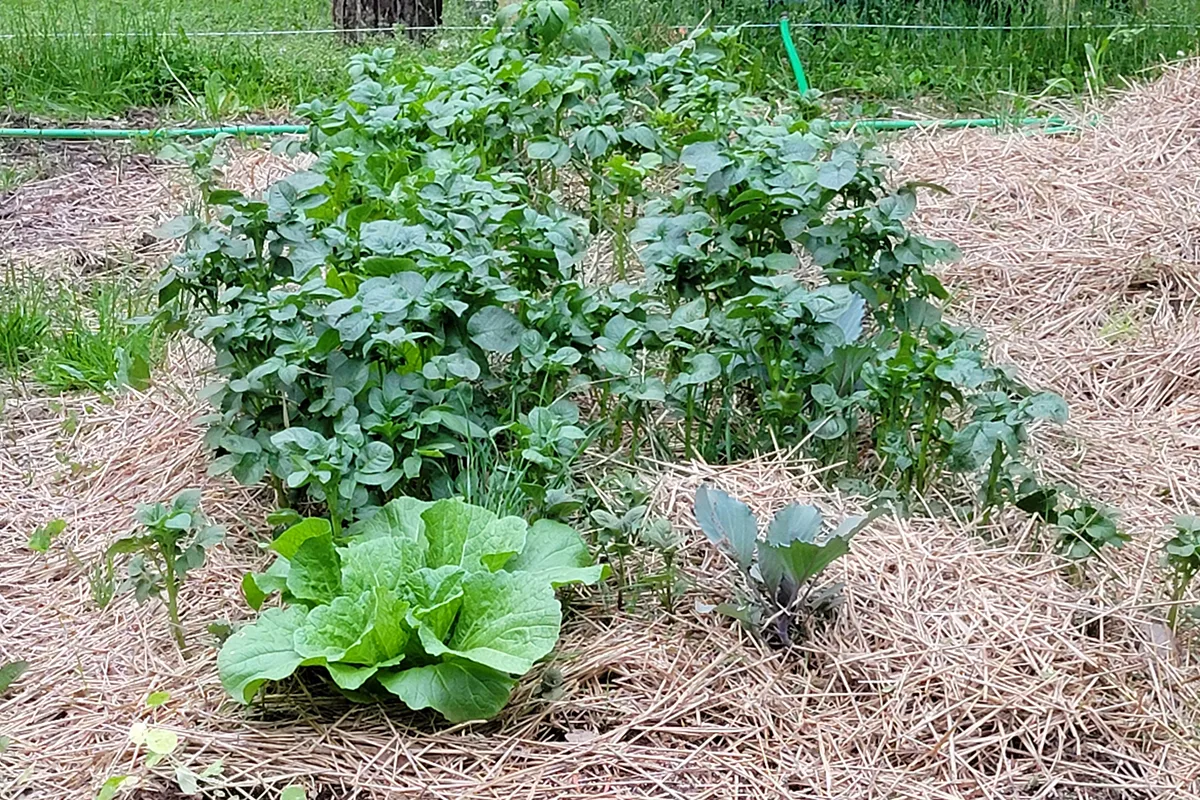
Potatoes can be grown in all sorts of ways. In sacks, in buckets, in raised beds, but more commonly, they are planted in the ground.
Or in the no-dig way, on top of the ground. Then covered with mulch.
I won’t say more about it because it’s already been done before. Here’s the link if you want to find out more.
The question remains, “Will you be converting your conventional garden into a no-dig garden, now that you know you can grow everything you love to eat?”

Get the famous Rural Sprout newsletter delivered to your inbox.
Including Sunday musings from our editor, Tracey, as well as “What’s Up Wednesday” our roundup of what’s in season and new article updates and alerts.

